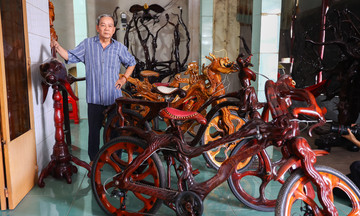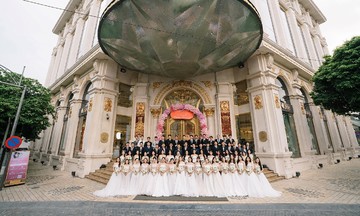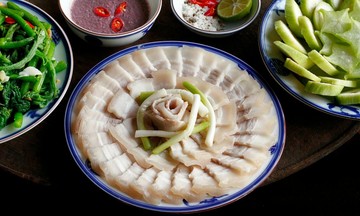Cha Ca La Vong: A century-old Hanoi flavor
On 18/8/2025, Cha Ca La Vong was added to the list of national intangible cultural heritages. This recognition solidifies the legacy of the century-old dish, associated with the Doan family since 1871.
The key ingredient is fresh pangasius, a fish known for its tender, sweet meat and few bones. The fish is filleted, thinly sliced, and marinated with galangal, turmeric, fermented rice, shrimp paste, and pepper according to a family secret recipe. Grilled over charcoal for a smoky aroma, it's then pan-fried in hot oil and tossed with dill and scallions right at the table. This method preserves the dish's characteristic golden color and fragrant, complex flavor.
Cha Ca La Vong is best enjoyed with vermicelli noodles, roasted peanuts, fresh herbs, and a bowl of frothy shrimp paste seasoned with lime and a touch of belostomatid essence for a traditional flavor. The dish is served hot, and the communal dining experience around a small stove adds to its charm. Cha Ca La Vong was also featured by MSNBC as one of the top 5 must-try culinary experiences in Hanoi.
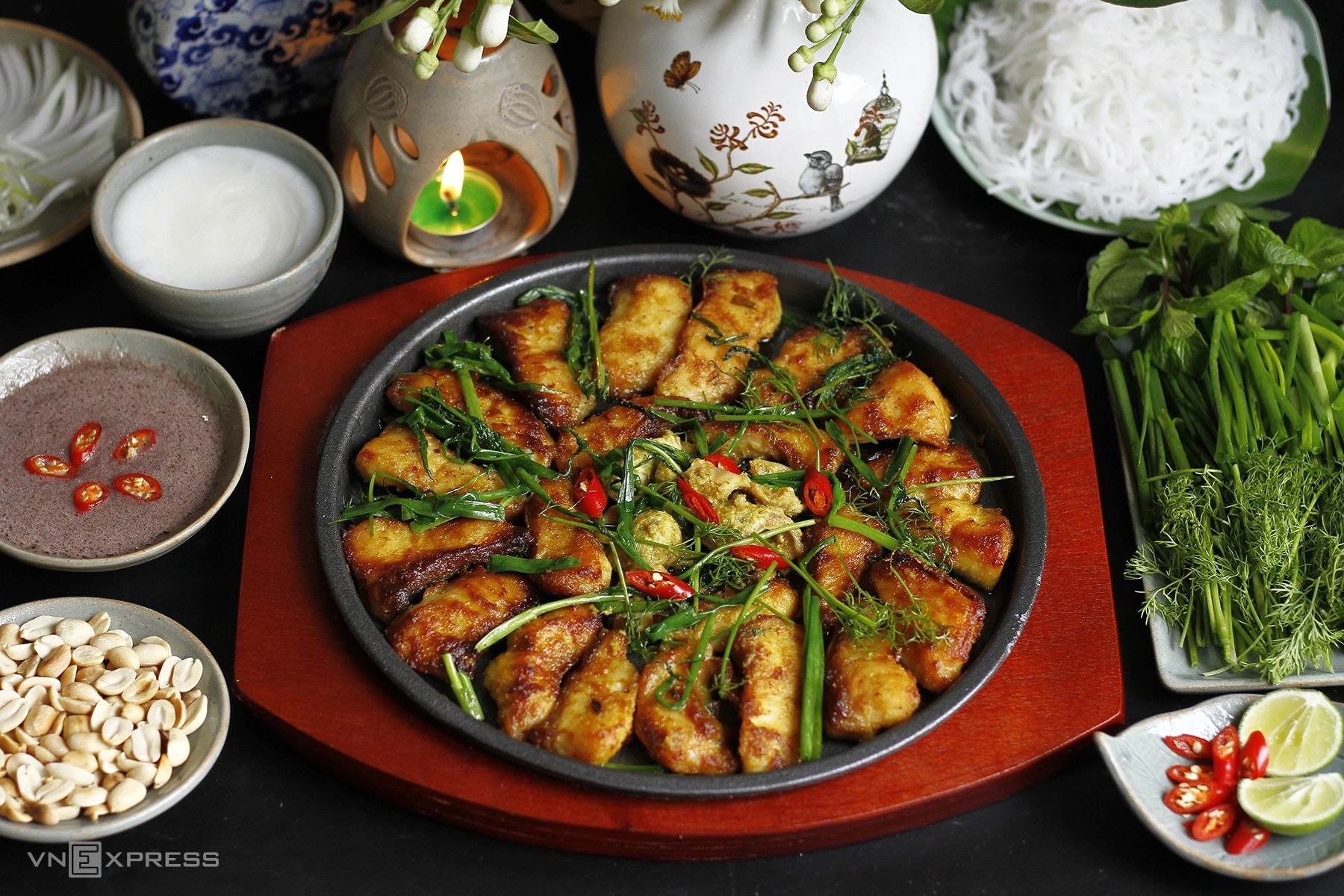 |
Cha Ca La Vong. |
Hanoi pho: A culinary symbol of Trang An
Recognized as a national intangible cultural heritage, pho is considered the most iconic dish of Vietnamese cuisine, synonymous with Hanoi for over a century. A steaming bowl of pho is not only a beloved breakfast staple but also a culinary ambassador, introducing Vietnamese flavors to the world.
The broth for beef pho is simmered for hours with beef bones, while chicken pho uses chicken bones. Ginger, roasted onions, cardamom, cinnamon, and star anise infuse the broth with aromatic depth. The noodles are made from soft, non-glutinous rice, thinly rolled and cut into delicate strands. The magic lies in the clear, sweet, yet savory broth poured over the noodles, combined with rare or well-done beef or shredded chicken, and garnished with scallions and fresh herbs.
Hanoi pho is renowned for its balance of flavors: rich but not overwhelming, flavorful but not overpowering. This harmony has earned pho recognition as a "culinary heritage" by UNESCO and a spot on numerous "world's best dishes" lists by CNN and Lonely Planet. For Hanoians, a bowl of steaming hot pho on a cool autumn morning encapsulates the essence of Trang An culture.
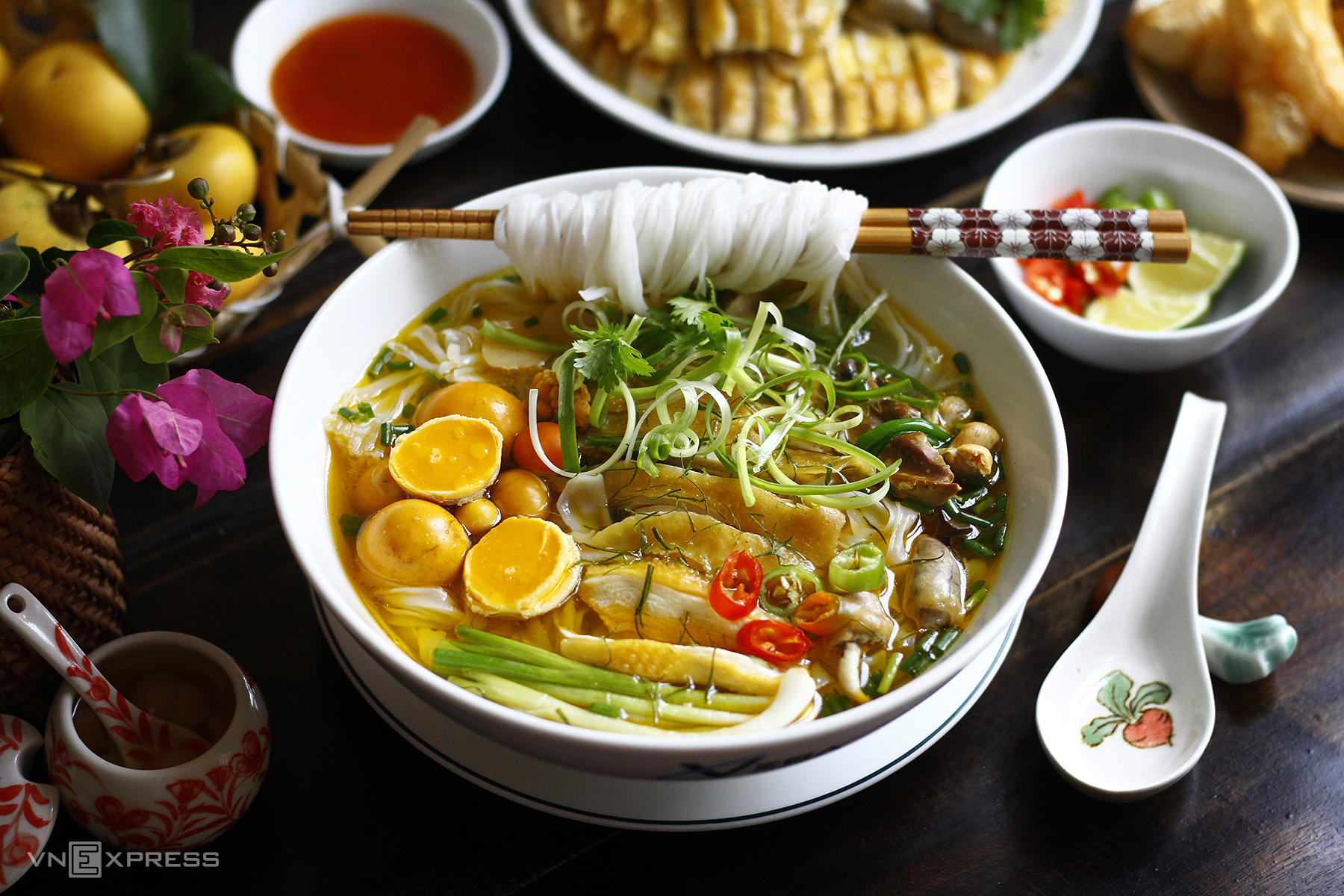 |
Hanoi chicken pho. |
Bat Trang village feast
Beyond its famed ceramics, Bat Trang village is known for its traditional feasts, symbolizing culinary completeness in Hanoi. In traditional families, a grand feast is often laid out according to the "6 bowls, 8 plates" custom, featuring a variety of savory dishes, soups, stir-fries, spring rolls, sticky rice, and more. This elaborate spread expresses wishes for abundance and prosperity.
The women of Bat Trang are renowned for their culinary skills, meticulously preparing each dish, from dried bamboo shoot and squid soup to stir-fried squid with kohlrabi, pigeon spring rolls, shrimp patties, boiled chicken, and banh chung. The artistry lies not only in the ingredients but also in the presentation, ensuring each feast is both visually appealing and delicious.
Today, Bat Trang feasts are not limited to Tet or village festivals. They have become a preserved cultural tradition, revived in culinary events, evoking memories of an elegant and abundant Hanoi.
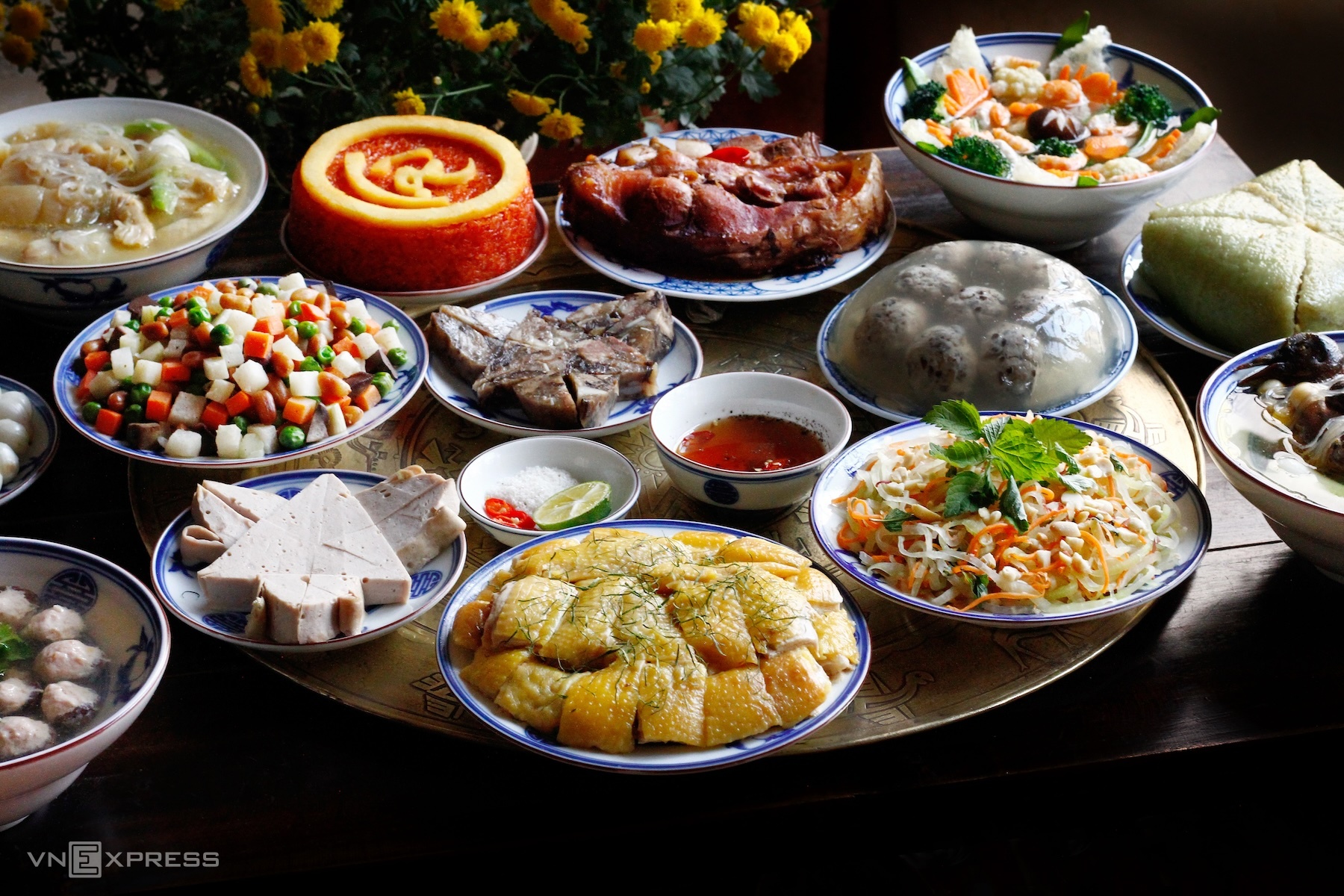 |
Traditional Hanoi feast. |
Hanoi bun cha
If pho is the "national soul" dish, bun cha is the everyday comfort food of Hanoi. A traditional bun cha serving includes pristine white vermicelli noodles, grilled meatballs and patties cooked over charcoal, and a sweet and sour dipping sauce made with fermented rice vinegar, served with fresh herbs. The smoky aroma of grilled meat adds a rustic yet alluring touch. Bun cha gained international attention when former US President Barack Obama enjoyed it with chef Anthony Bourdain at a small eatery on Le Van Huu street. Visiting Hanoi during the 2/9 holiday, enjoying a hot bowl of bun cha by the sidewalk, one can easily grasp the easygoing spirit of the capital.
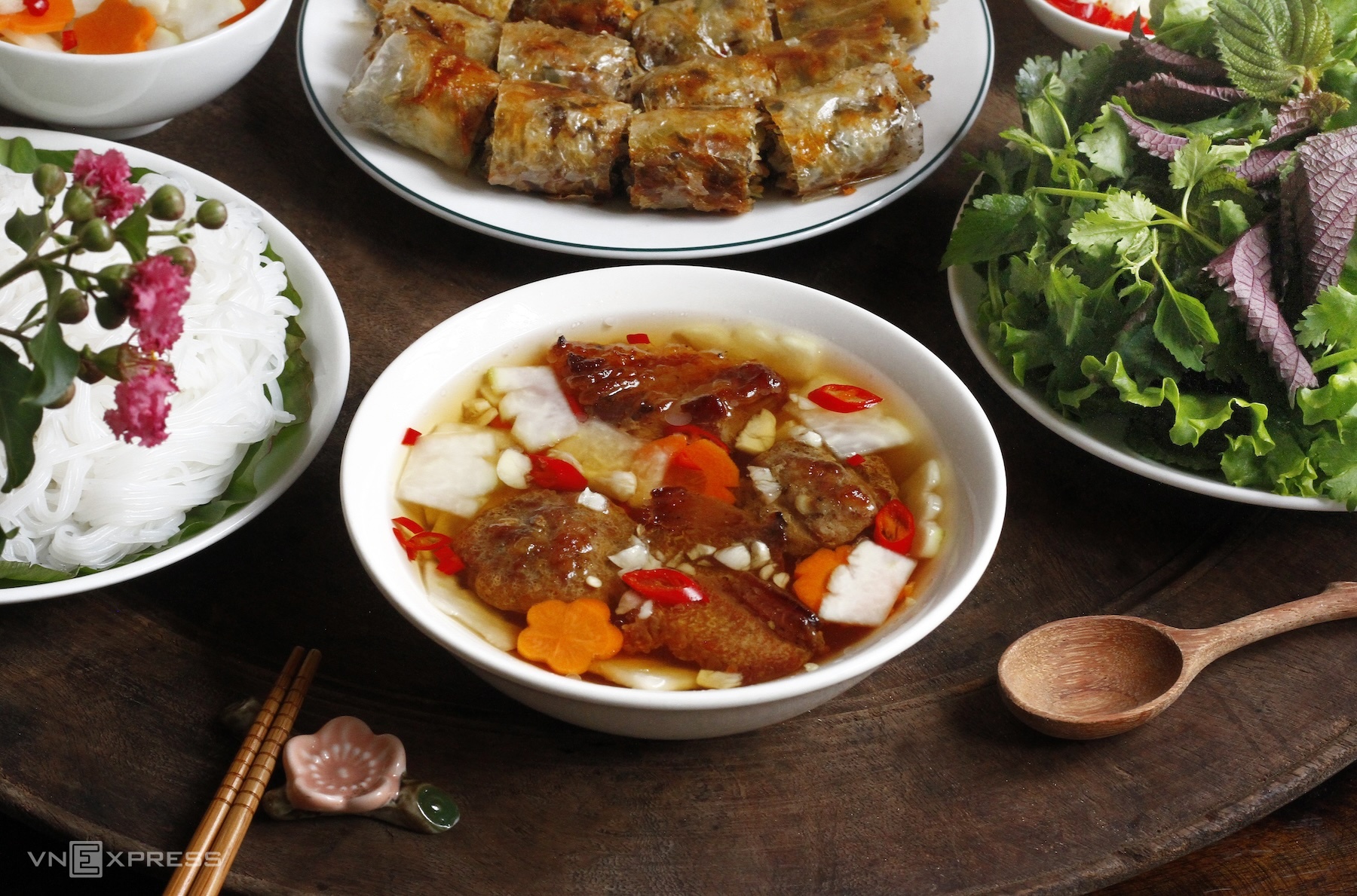 |
Bun cha. |
Com: The taste of Hanoi autumn
September is also com season – a delicacy often referred to as the "soul of Hanoi autumn". Com, young green rice flakes from Vong village, are soft, chewy, and subtly sweet, often paired with ripe trung cuoc bananas. Many com-based dishes are popular, such as com sticky rice, com sweet soup, stir-fried com, com patties, and com cakes. Com is not just a snack; it represents the refined essence of young rice grains. Visitors during the holiday can both savor it and bring it home as a meaningful gift.
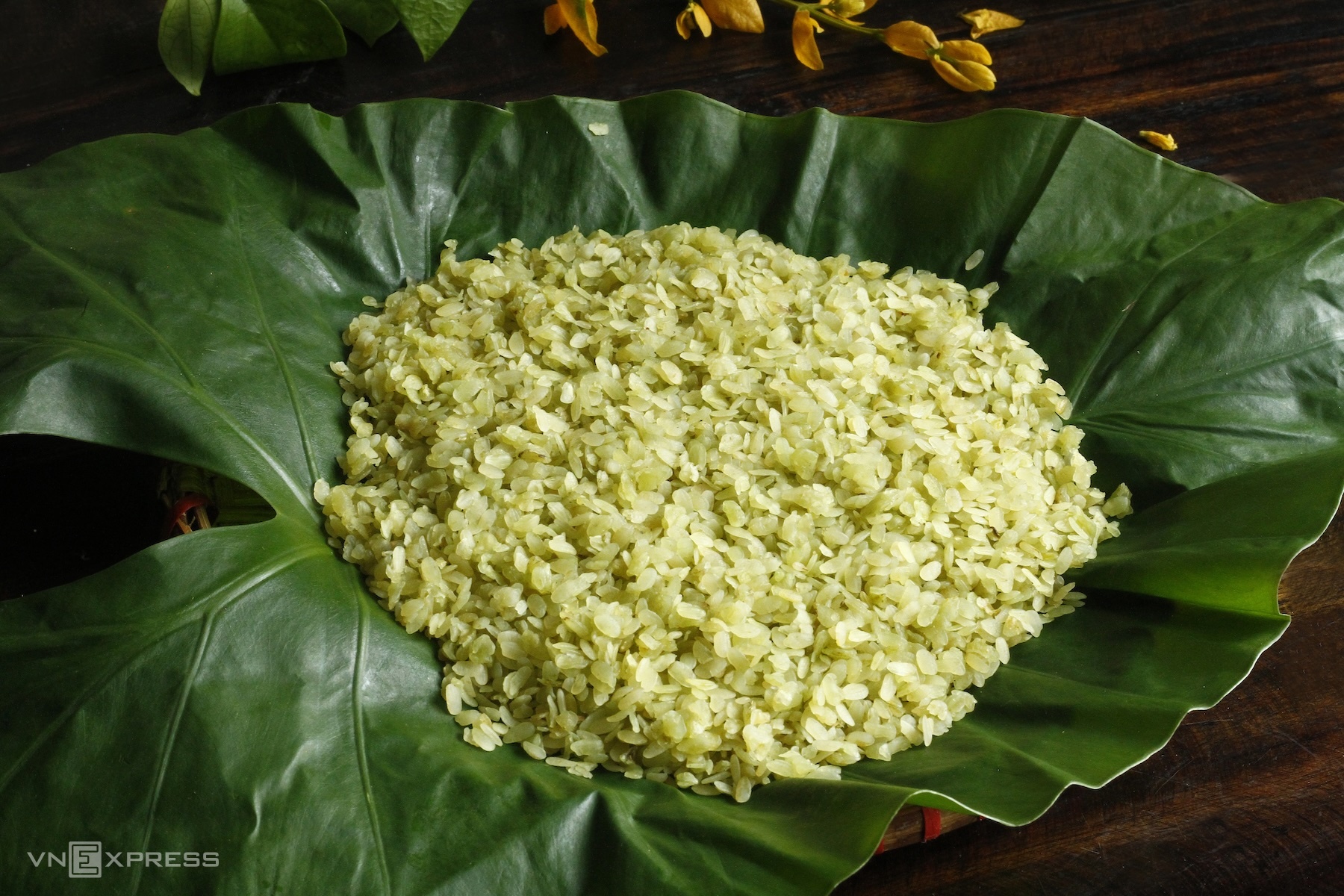 |
Ho Tay shrimp cakes. |
Ho Tay shrimp cakes
While in Hanoi for the holiday, don't forget to visit Ho Tay (West Lake) and try the shrimp cakes, a snack that has become a local culinary symbol. Fresh shrimp are encased in a thin layer of batter, fried to a golden crisp, and served with fresh herbs, pickled vegetables, and a sweet and sour dipping sauce, creating a delightful balance of flavors. Sitting by the lake, enjoying a hot shrimp cake in the cool autumn breeze, diners not only savor the dish but also experience the laid-back lifestyle of Hanoi. Ho Tay shrimp cakes, therefore, offer more than just flavor; they represent the memories and ambiance associated with the capital.
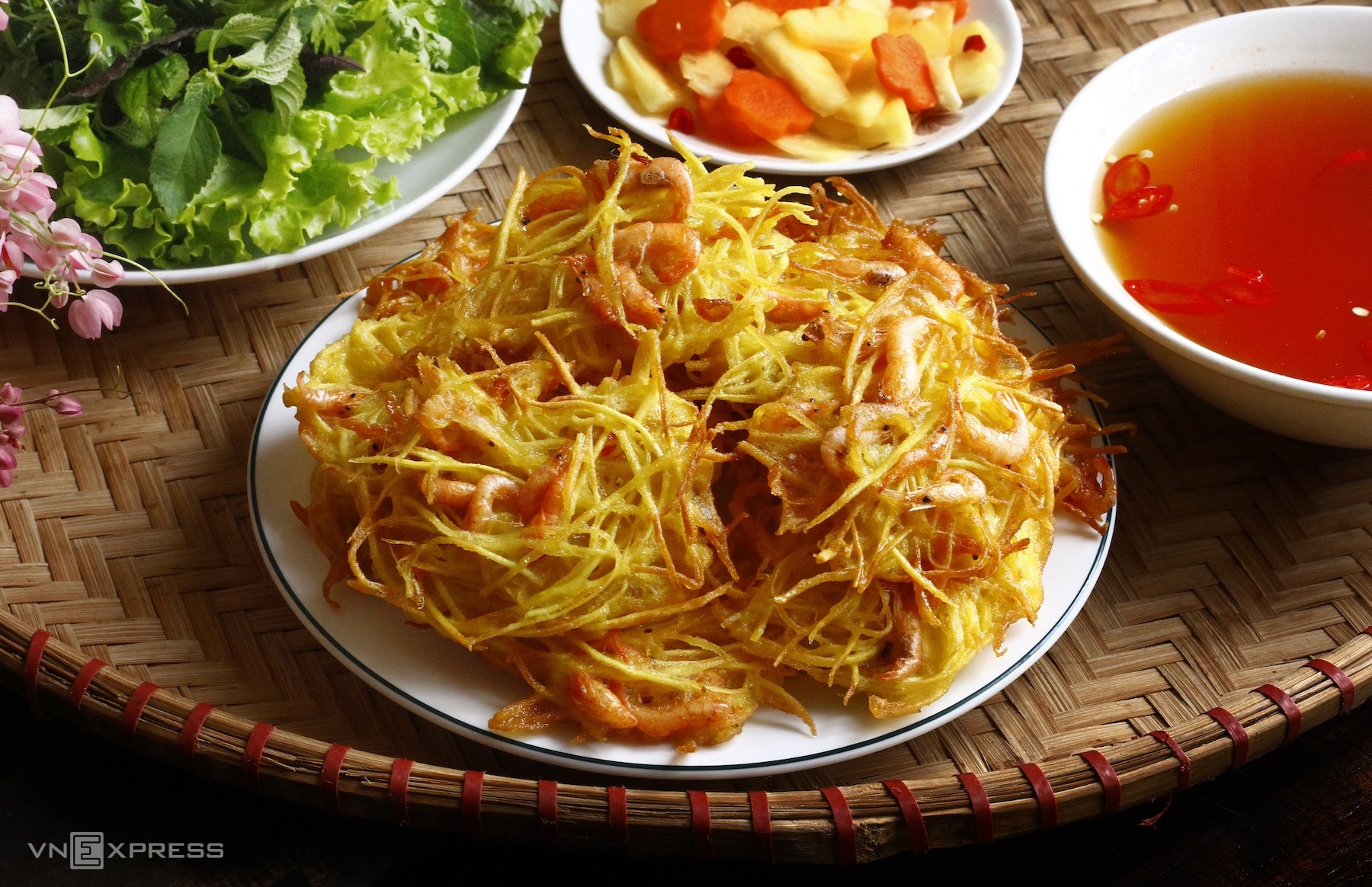 |
Cartilage rib porridge
Hanoi at night has a different, quieter, yet equally captivating rhythm. A warm bowl of cartilage rib porridge from a night stall provides comfort in the Old Quarter. Finely ground rice is cooked to a smooth consistency, combined with bone broth, tender cartilage ribs, dried shrimp floss, and fried onions. After a day of festivities, visitors stopping by a small porridge stall will experience Hanoi's warmth and intimacy.
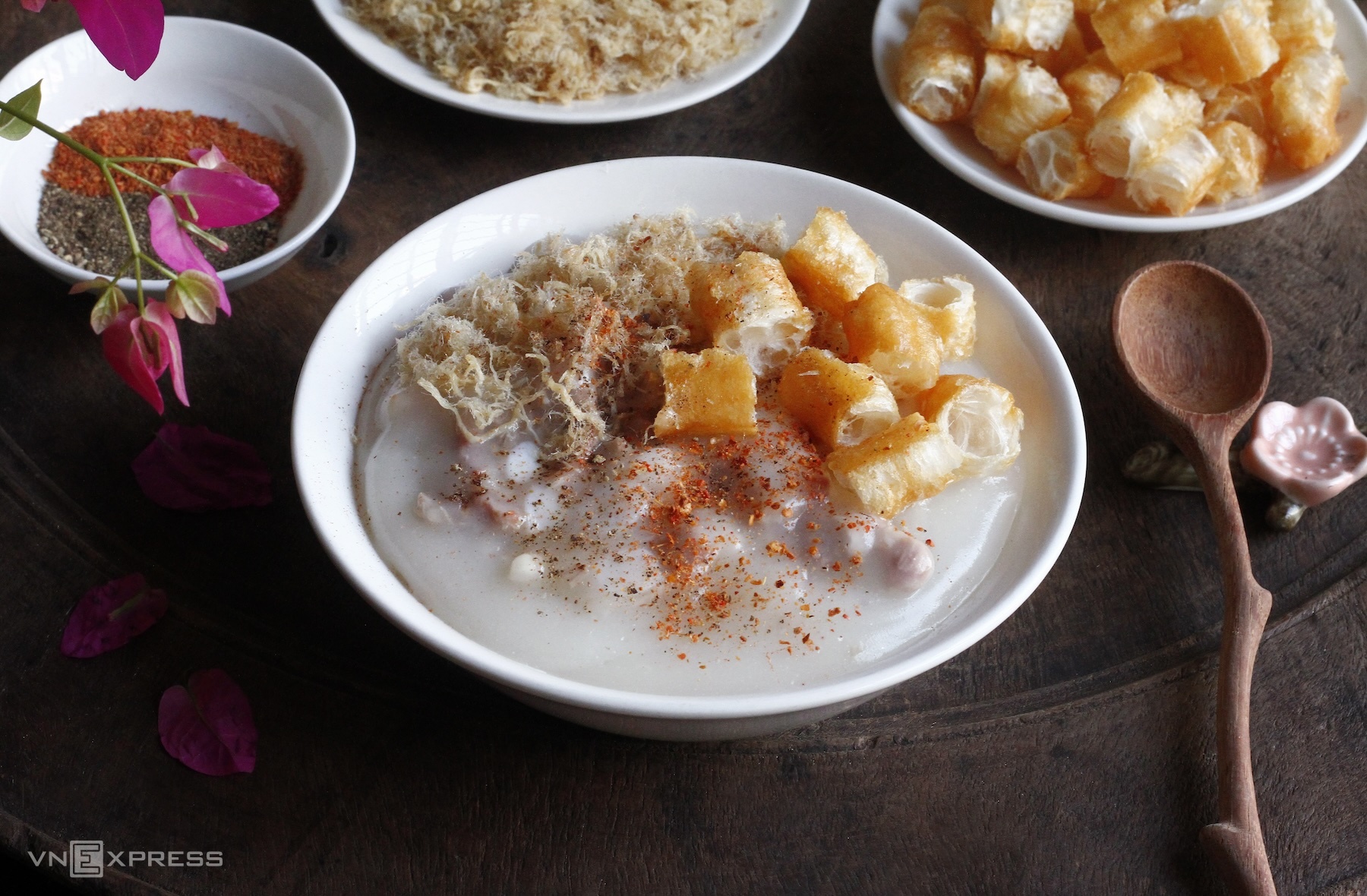 |
Longan sweet soup with lotus seeds
Late summer and early autumn mark the season for Hung Yen longans and West Lake lotus seeds. Longan sweet soup with lotus seeds is both a refreshing treat and a unique cultural experience. Hanoians traditionally considered this a refined dessert, served to homeowners or honored guests on the 1st and 15th of the lunar month or during holidays.
Each longan is meticulously peeled, its form preserved, and a cooked lotus seed is gently nestled within the translucent flesh. The clear, sweet soup, flavored with rock sugar, blends harmoniously with the subtle fragrance of the fruit and seeds. A touch of lotus rice or a few jasmine blossoms adds an elegant aroma and visual appeal, capturing the essence of Hanoi's culinary refinement.
Sticky rice with mung bean and areca flower sweet soup
In Trang An cuisine, sticky rice with mung bean is considered the most elaborate sticky rice dish, typically reserved for the full moon, holidays, and Tet. Glutinous rice undergoes multiple steps of soaking, steaming, pounding, and rubbing, resulting in separate yet chewy grains coated in a shimmering layer of yellow mung bean, likened to "gold-wrapped silver." Sticky rice with mung bean is even more delightful when paired with areca flower sweet soup. The translucent soup, with golden mung beans resembling fallen areca flowers, offers a refreshing taste of arrowroot and the gentle sweetness of rock sugar. The warm, savory rice and the cool, sweet soup create a harmonious balance, reflecting the concept of wholeness in Hanoi's culinary culture.
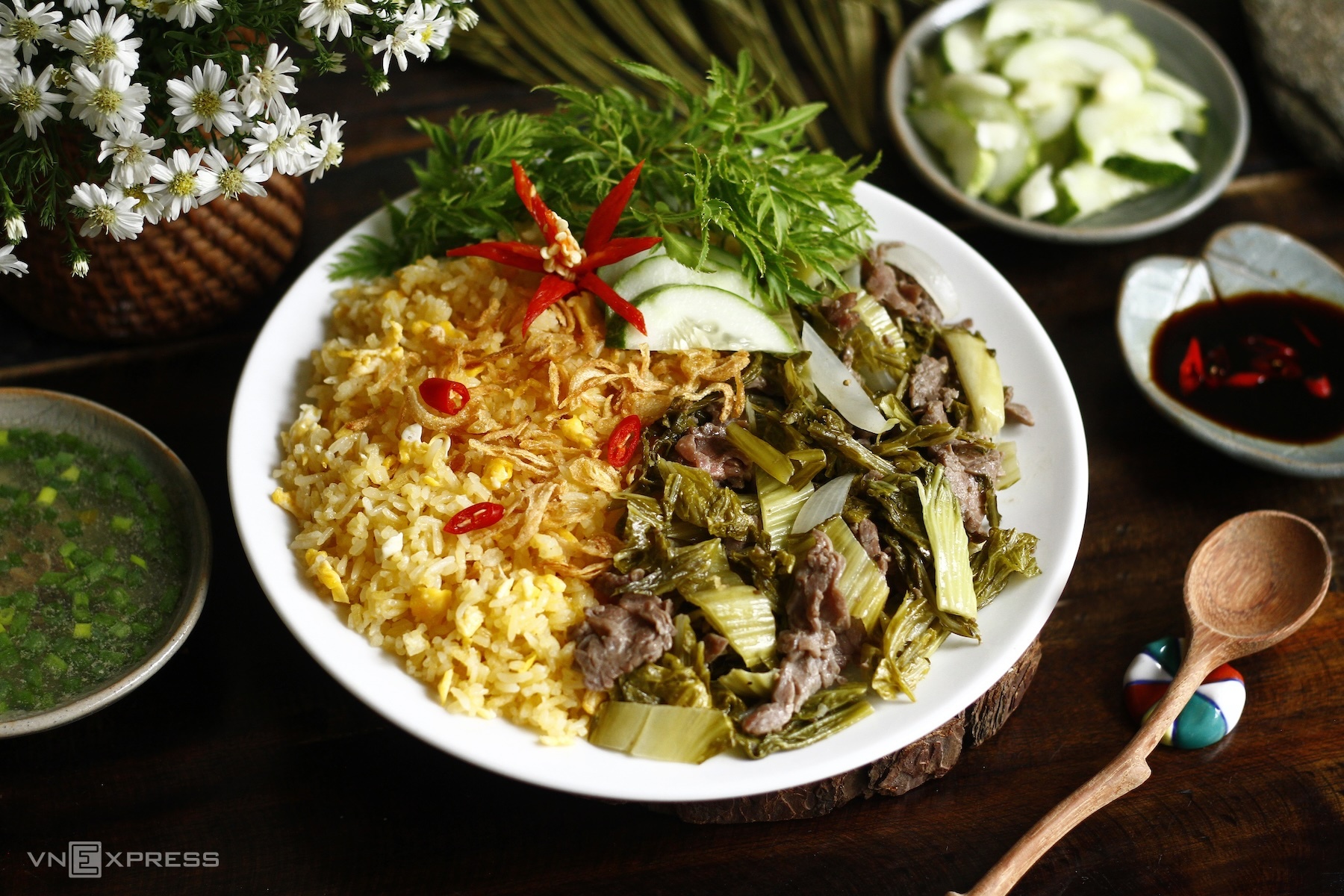 |
Fried rice with beef and pickled mustard greens
Inspired by Nam Dinh fried rice, Hanoians have created their own version: fried rice with beef and pickled mustard greens, a simple yet refined dish. Day-old rice is dried, mixed with egg yolk, and fried to a golden hue, creating chewy yet crispy grains with the aroma of pork fat in a cast iron pan. Thinly sliced beef is quickly stir-fried for tenderness, combined with tangy pickled mustard greens and crunchy onions. The addition of crispy fried rice adds a textural contrast. Served with pickled vegetables and hot beef broth, this simple fried rice dish becomes a complete and satisfying meal, perfect for sustenance while attending the parade.
Bui Thuy




